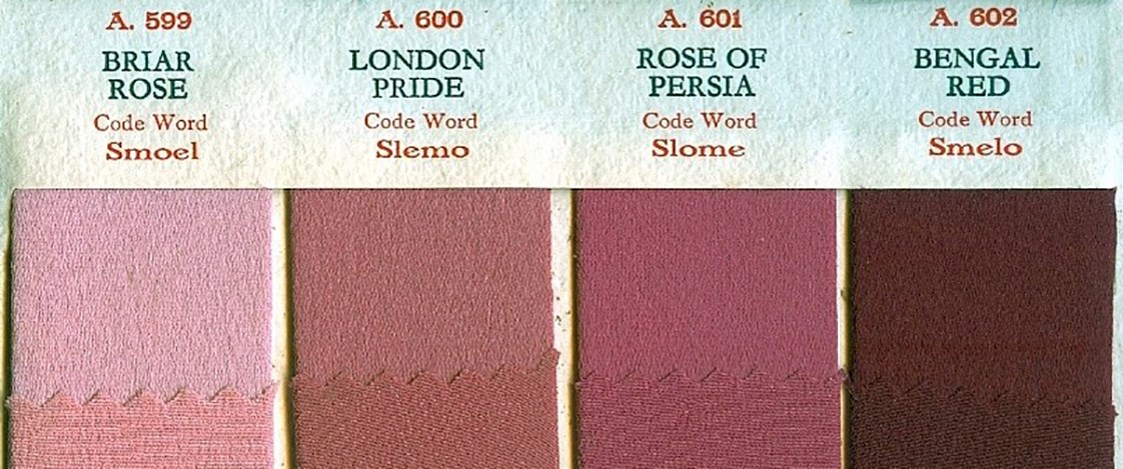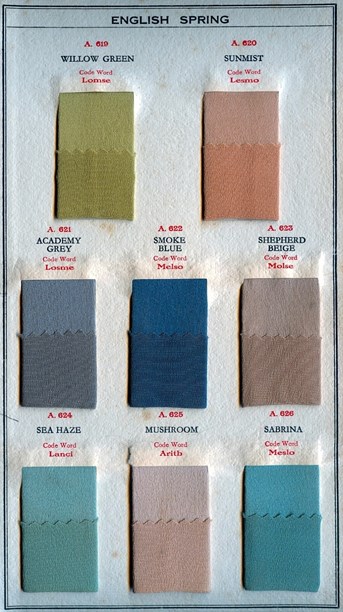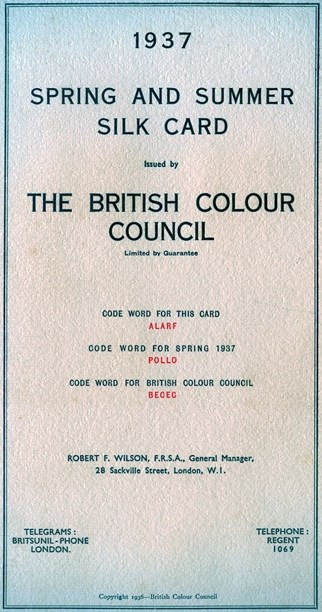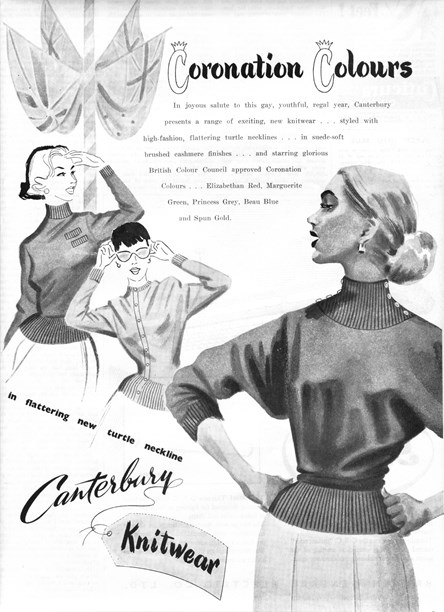Stories
The British Colour Council
1931 - 1960s

Founded in 1931 and chaired by British designer Robert Francis Wilson, the British Colour Council produced indexes of named colours for use by the government, academia and various industries. The idea was to place colour determination for the British Empire in British hands.
Originally designed for use in the textile dye industry, the British Colour Codes defined colours by hue, tone and intensity. They became standards for identifying colours used in everything from the Royal Horticultural Society to British government planning commission maps and flags, the British Army, the Royal Institute of British Architects, the Royal Mail and, of course, fashion.
The first British Colour Council Dictionary was published in 1934. Supplementing the standard colours, new colours were introduced each season. These were presented on colour cards featuring heavy silk ribbon samples, each one named, numbered and coded. The reverse side of the ribbon was also shown to highlight how surface texture affected a colour's appearance.

The colouration of the reverse side of the silk samples was always slightly deeper.
New Zealand, being one of the old Dominions, took its direction from the British Colour Council. The colour cards were used as a guide by the textile industry, fabric importers, milliners, fabric stores and major department stores in their dress fabric and fashion departments. If a department store's window displays promoted Fiesta Pink, Ming Blue, Watermelon or Burnt Orange in a particular season, the colour names would have been British Colour Council determined, not the whim of a creative employee.
The Council's Silk Card for Spring and Summer 1937 (a survivor from a former Dunedin department store) reveals colours redolent of the Empire. Up until 1947, India was still a part of the British Empire, hence Bengal Red and Indian Orange. The English cottage garden is represented by Lilac Time, Viola and Iris Blue, the countryside by Shepherd Beige, Linnet's Egg, Pastoral Green and Briar Rose. Conjuring up images of King and Country are Flag Blue, Princes Blue, Guardsman Red and London Pride.

Back cover of the British Colour Council Silk Card, Spring and Summer 1937.
For the Coronation of George VI in 1937, the British Colour Council produced a special set of traditional British Colours with Heraldic, Army and Orders of Knighthood origins. Further royal-related colours were issued in 1953 for Princess Elizabeth's Coronation. A full-page Canterbury Knitwear advertisement that appeared in the Coronation issue of The Mirror (New Zealand National Home Journal) in June 1953 proudly promoted brushed cashmere turtle-neck sweaters in 'British Colour Council approved Coronation Colours - Elizabethan Red, Marguerite Green, Princess Grey, Beau Blue and Spun Gold'. Unfortunately the advertisement is in black and white so the Coronation Colours are left to the imagination.

Canterbury Knitwear advertisement. The Mirror Coronation Issue, June 1953.
The bias in the British Colour Council Dictionary towards colours suitable for textiles meant that, from a technical point of view, the codes were less relevant as a standard reference for carpets, upholstery, paint, pottery, porcelain and glass. In 1949, the Council rectified the problem by introducing the Dictionary for Interior Decoration which included colours with a wider application.
The British Colour Council was active until the 1960s when its colour codes were largely supplanted by commercial colour standards such as Pantone. Established in America in the 1950s, the Pantone Colour Institute is now a key player in standardised colour reproduction systems.
In the late 1960s, New Zealand got its own National Colour Council. Set up by the Fashion Industry Association and the Retailers Association to provide colour recommendations to the local apparel industry, it was run from the office of Peter Mitchell, founder/editor of Apparel magazine, with Jillian Ewart as fashion director.
By projecting world colour trends, the council was able to ensure textile, leather, clothing and footwear manufacturers presented a co-ordinated, up-to-date colour story each season. Mills and knitted fabric manufacturers received the information 18 months ahead of a season, fabric wholesalers, manufacturers and leather tanners 12 months ahead and retailers six months ahead. The information was supplied by reliable international sources, many of them American-based.
Over time, however, the need for this type of service apparently decreased. The National Colour Council was disbanded in the mid-1970s.
Text by Cecilie Geary. Banner image of the British Colour Council Silk Card Spring and Summer, 1937.
Last published October 2015.